MORAN ARTISTS
Landscapes & Seascapes
——————
The Art of
Edward, Thomas & Mary Nimmo Moran
— Selection from Exhibits at the Moran Studio —
Works arranged chronologically.
Artists’ Bios Below.
~~~~~~~~~~~~~~~~~~~~~~~~~~~
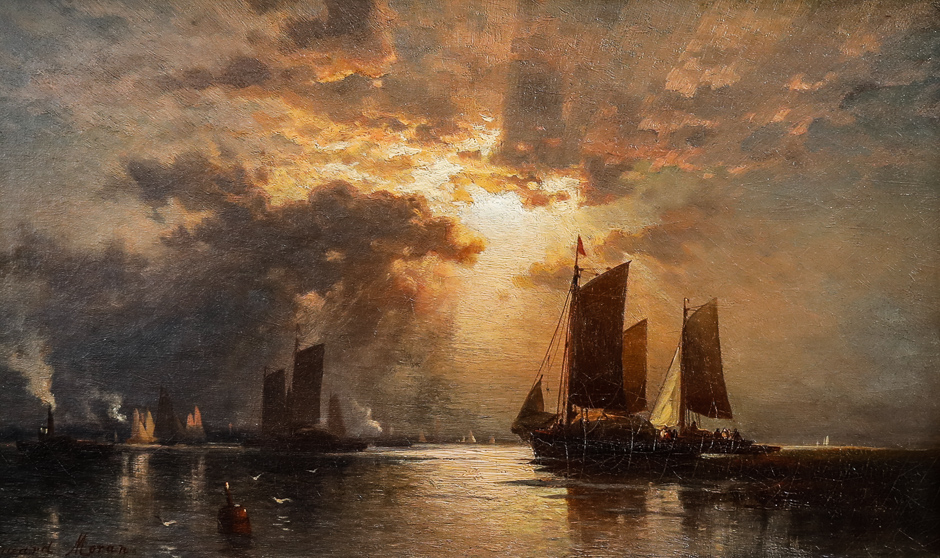
Evening in New York Harbor
Edward Moran, c. 1865. Oil on canvas mounted on panel. Private collection.
——————

Watercolor by Thomas Moran, 1871. Chromolithograph print — these were the first multi-color commercial prints that spread the colors lacking in the black & white wood engravings. Collection of the National Park Service, Yellowstone.
——————
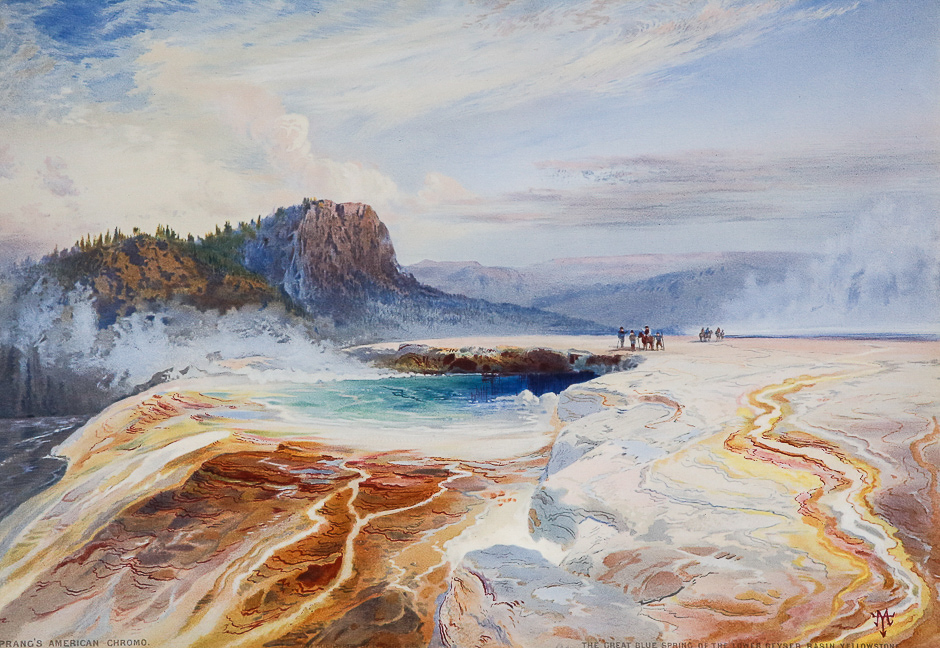
The Great Blue Spring of the Lower Geyser Basin, Yellowstone.
Thomas Moran, 1874. Chromolithograph on paper from an original watercolor by Moran, published in Boston by Louis Prang, one of the greatest innovators of colored printing. — Department of the Interior, Yellowstone National Park, Wyoming.
——————

One Egypt Lane, Looking Toward Pantigo
Mary Nimmo Moran, 1880. Collection Angel and Curt Schade.
——————

Montauk Point
Thomas Moran, September 4, 1880. Etching.
——————
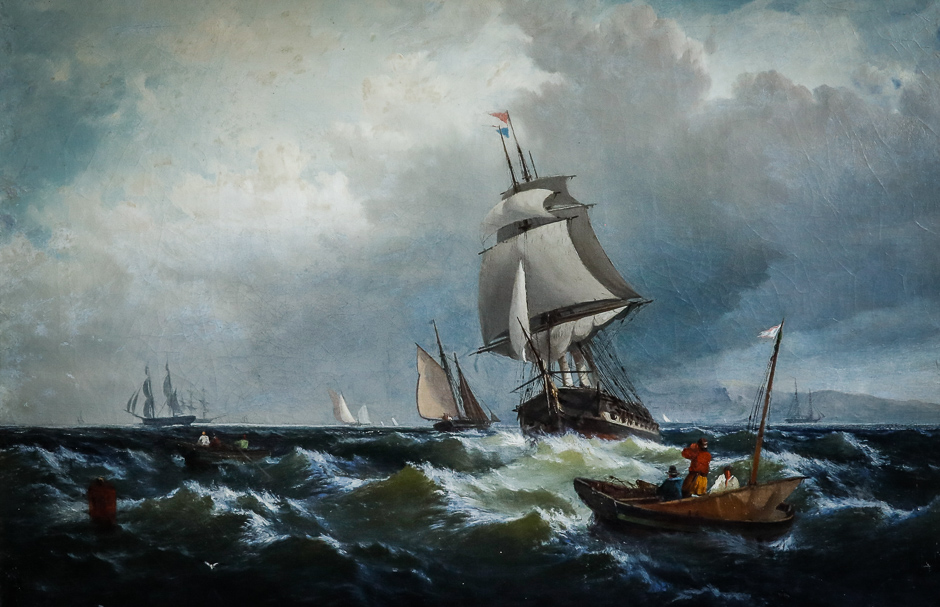
Moonlit Waves, Long Island’s North Shore
Edward Moran, 1881. Oil on canvas. Private collection.
——————
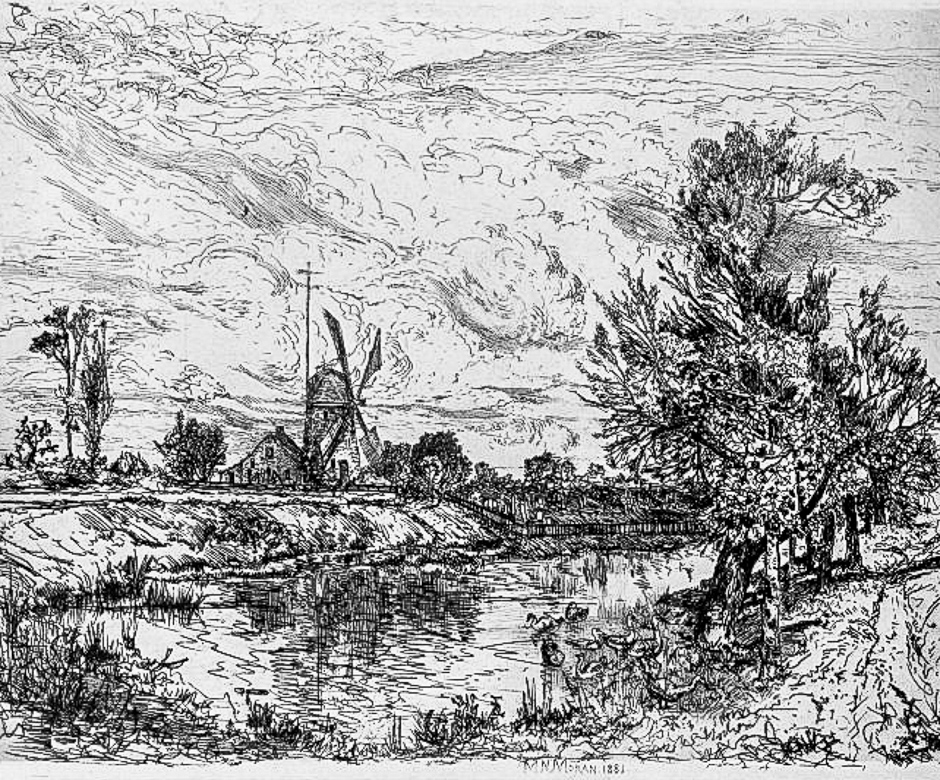
The Goose Pond
Mary Nimmo Moran, 1881. The Goose Pond, Etching by Mary Nimmo Moran, 1881, signed by Thomas Moran.
——————
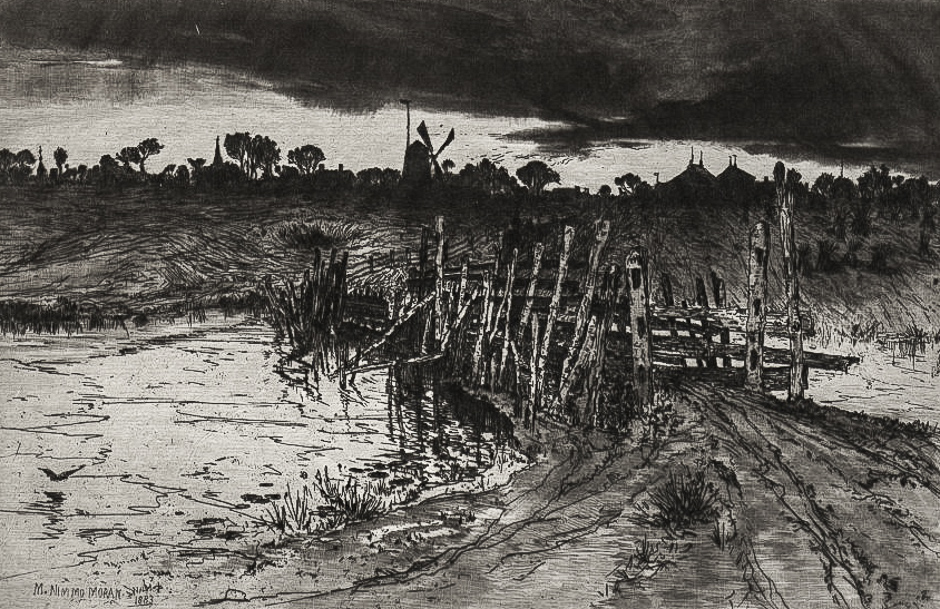
Twist Gloaming and Dark
Mary Nimmo Moran, 1883. Etching.
——————
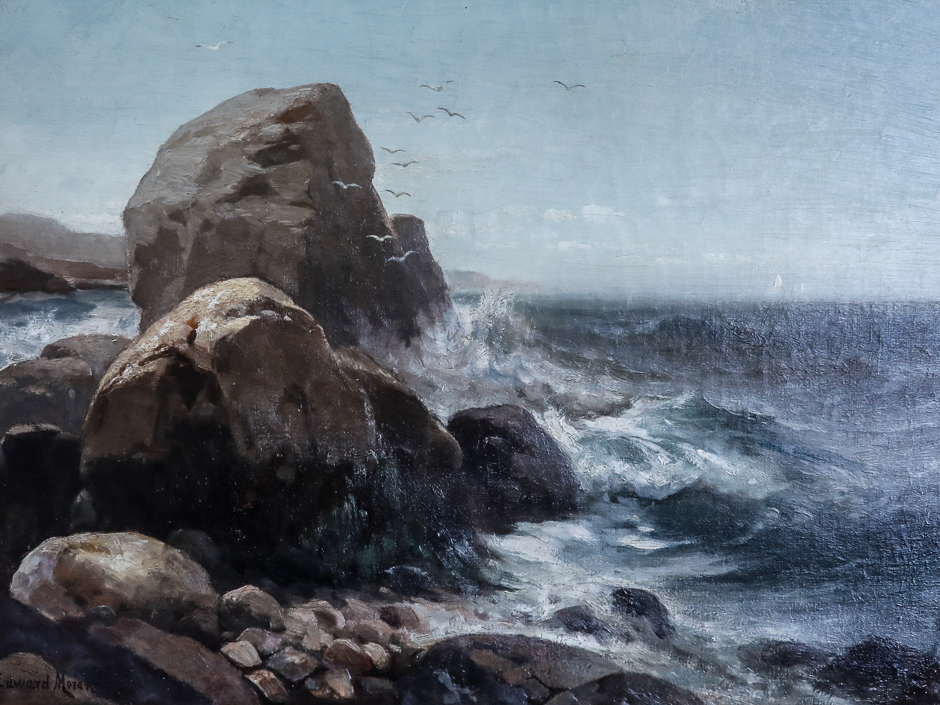
Rocky Surf, Long Island
Edward Moran, c 1885. Oil on canvas. Private Collection.
Note: Edward Moran had a summer studio near Greenport.
——————

Lower Falls of the Yellowstone
Thomas Moran, 1885. Oil on canvas. Department of the Interior, Yellowstone National Park, Wyoming.
——————
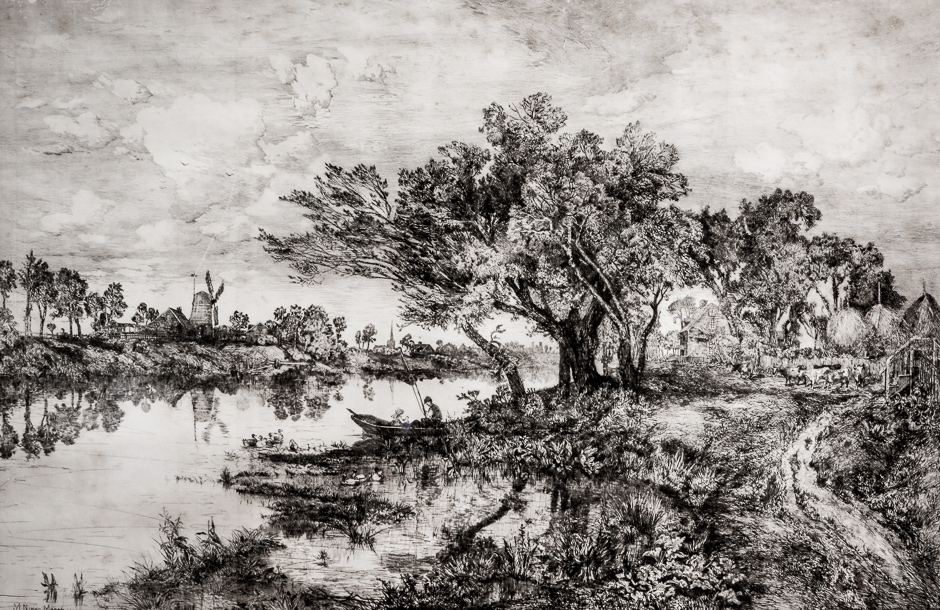
Where Through The Willows Creaking Loud Is Heard The Busy Mill
Mary Nimmo Moran, 1886. Etching on paper. Private Collection.
——————

Twilight Fishing Fleet
Edward Moran, c. 1889. Private Collection.
——————

Lost at Sea, The Buoy
Edward Moran, c. 1890. Oil on canvas. Private collection.
——————
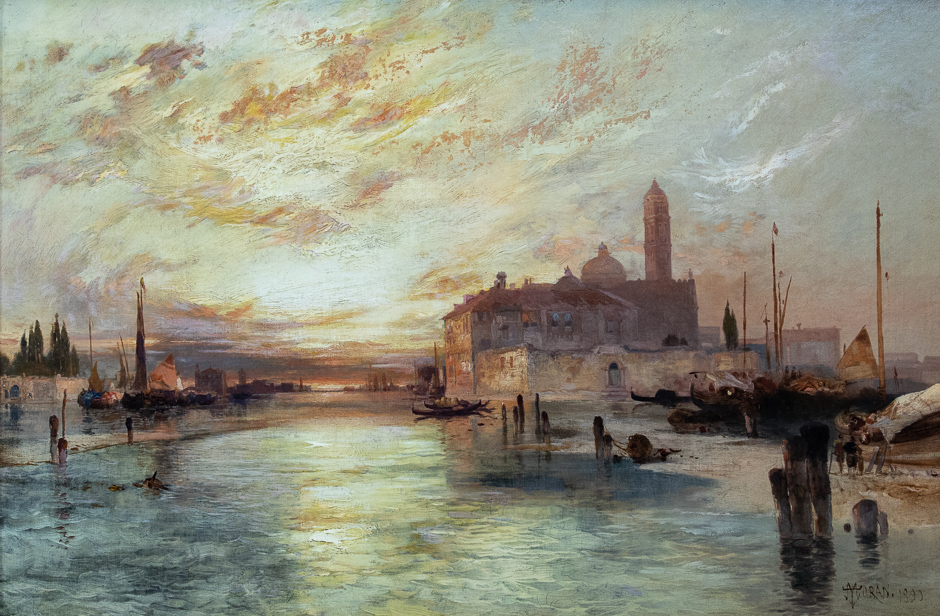
Venice
Thomas Moran, 1890.Venice from the back of San Giorgio Maggiore, seen from the channel that leads to San Clemente.Oil on canvas. Private collection.
——————

Woodland Scene
Mary Nimmo Moran, 1898, signed. Christmas, 1898.
——————
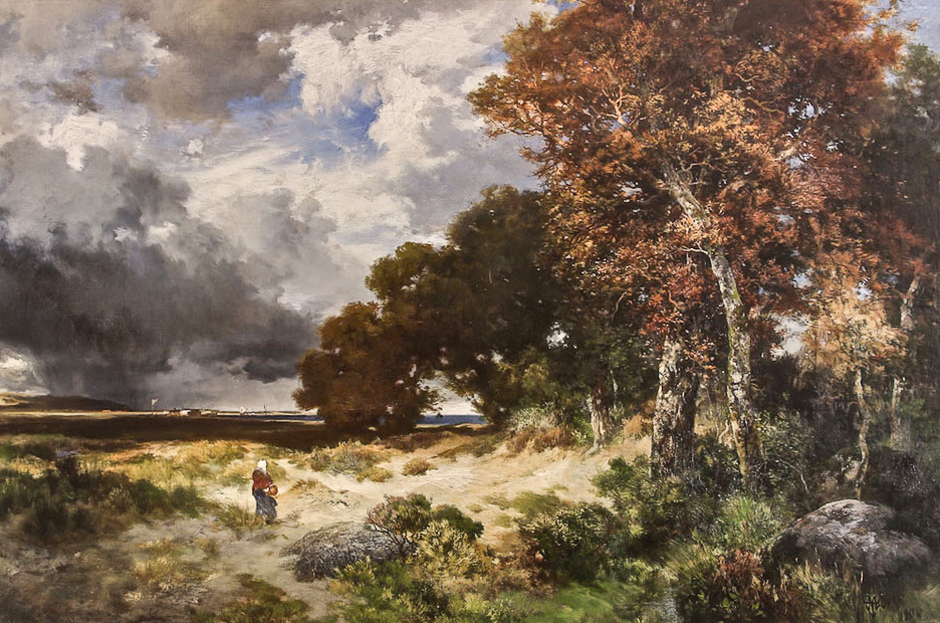
Autumn on Peconic Bay
Thomas Moran, 1904. Oil on canvas, 20 x 30 inches. Private collection.
——————
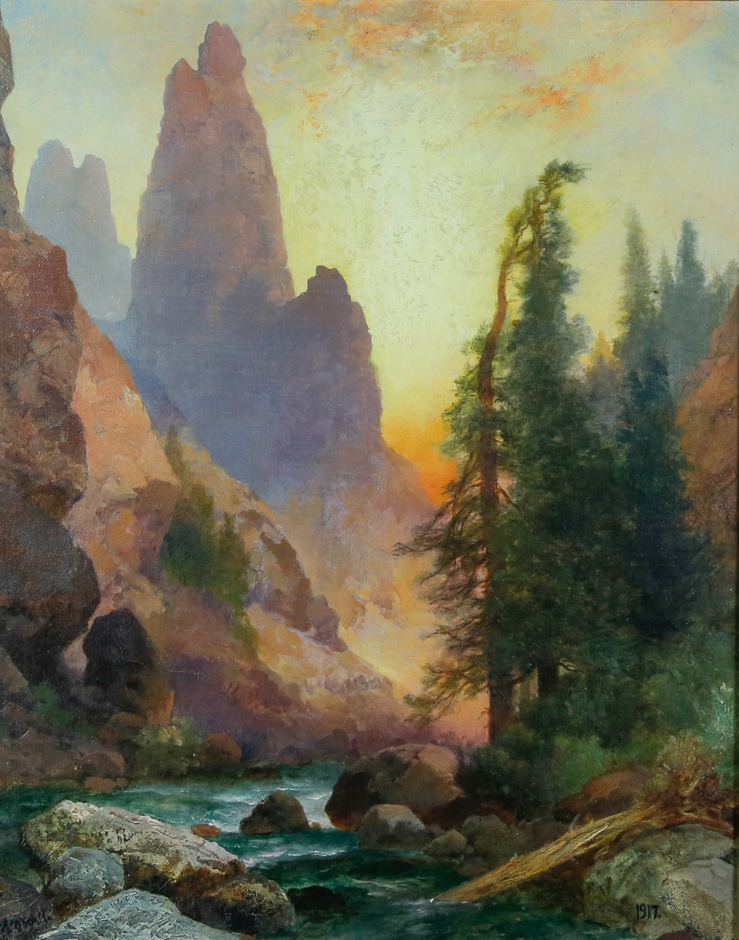
Tower Falls, Yellowstone
Thomas Moran, 1917. Oil on canvas. Gift of Ruth B. Moran.
——————
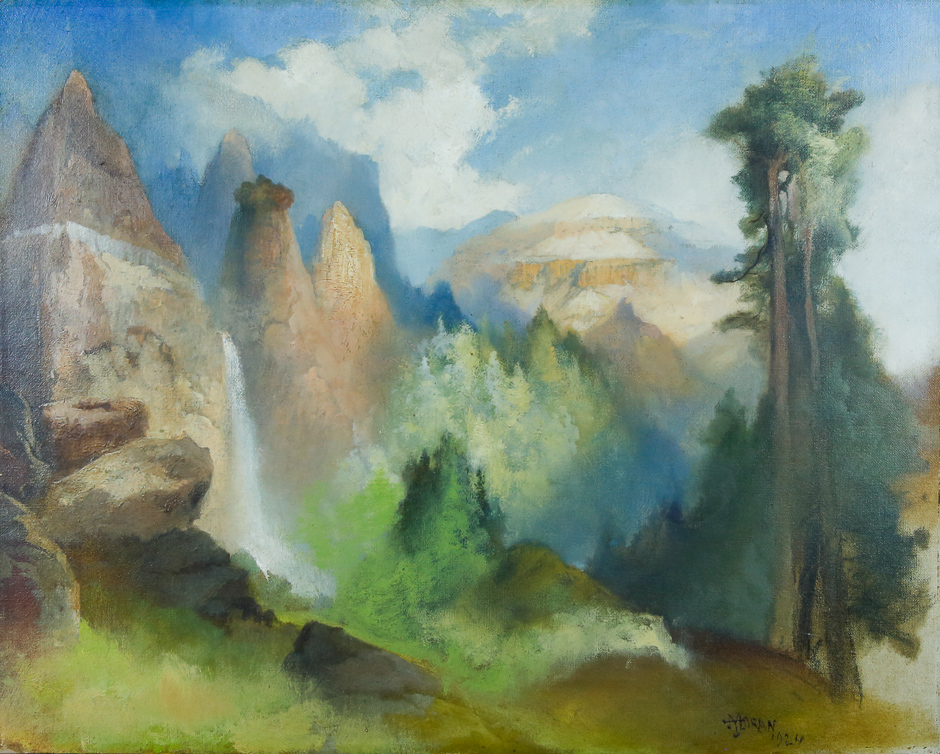
Tower Falls, unfinished
Thomas Moran, 1924. Believed to be the last oil painting by Thomas Moran before his death in 1926. Gift of Ruth Moran.
~~~~~~~~~~~~~~~~~~~~~~~~~~~~~~~~~~~~~
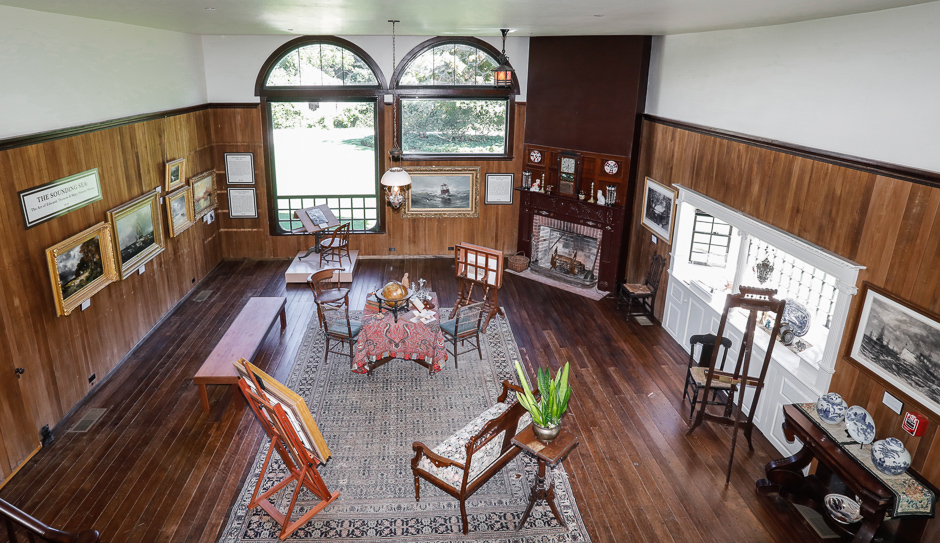
‘The Sounding Sea’ Exhibit, 2021 / Closed.
Moran Studio from balcony, September 10, 2021.
——————- Artists’ Bios ——————-
Edward Moran / 1829 – 1901
The Moran family, from Bolton, England, made their move to America in 2 trips. Edward Moran’s father arrived at Philadelphia in 1842 and set-up a weaving mill in Cohocksink, Pennsylvania. Edward Moran was 15 years old when he and his 6 siblings, mother and grandmother sailed from Liverpool to Philadelphia, reuniting with his father in 1844. Edward Moran’s talent was likely recognized before the family immigrated. He studied with the marine artist James Hamilton soon after his arrival. He exhibited his first paintings at the Pennsylvania Academy of the Fine Arts in 1854. By 1856 his younger brother Thomas was his studio assistant. Edward was Thomas’s teacher and together their careers blossomed. By the time of Edward Moran’s death in 1901, he was heralded as the dean of American marine painters.
~~~~~~~~~~~~~~~~~~
Thomas Moran / 1837 – 1926
Edward Moran’s 16 year old brother, Thomas, became an apprentice in a Philadelphia wood engraving firm in 1853. By 1856 Edward Moran had bought his brother’s contract and hired him as a studio assistant. The talented Thomas became his brother’s pupil and entered 6 watercolors in the Pennsylvania Academy of the Fine Arts annual exhibition that same year. Edward Moran had 6 oil paintings in the exhibition. Both artists included works featuring rivers and coastal scenes. With their careers advancing, the two brothers set sail for England in 1862. It was in London where they likely saw their first painting by Joseph Millard William Turner, an artist whose works greatly affected their future works. Thomas married Mary Nimmo in 1863 and they started a family. The family moved to Newark, New Jersey. He soon got the commission of a lifetime, culminating in his life-changing expedition to the Grand Canyon in 1871. The Morans built their summer studio and cottage in East Hampton in 1884.
~~~~~~~~~~~~~~~~~~
Mary Nimmo Moran / 1842 – 1899
Mary Nimmo was born in Scotland in 1842. She and her brother sailed to America in 1847 with their widowed father. The family settled in Cresentville, a weaving center near Philadelphia. It was likely there that she met her future husband, the artist Thomas Moran. They were married in 1863, soon after Moran had returned from his first trip to England. He must have been pleased to discover that she was artistic, since he needed an assistant to help complete his numerous commissions. Thomas Moran taught Mary Nimmo Moran to draw, etch and paint. Throughout her career she brought up their 3 children and managed her husband’s career along with her own. She exhibited both nationally and internationally. By the time of her death in 1899, she was heralded as a leader in the Etching Revival movement.
~~~~~~~~~~~~~~~~~~
Text courtesy of the East Hampton Historical Society.
———
Paintings & etchings in this portfolio were selected from the following AAQ portfolios & an EHHS exhibit:
Mary & Thomas Moran’s House & Studio, East Hampton / link
‘Thomas Moran Discovers the American West’ / EHHS Exhibit / Closed 2019 / link
Thomas & Mary Nimmo Moran’s Etching & Sketches / link
Mary & Thomas Moran’s House & Studio, East Hampton / link
and
‘The Sounding Sea’ Exhibit, which closed on September 12, 2021.
—————–
Special thanks to Richard Barons, Chief Curator of the East Hampton Historical Society, for arranging access to the Moran Studio & for the text provided here.
____________________________________
